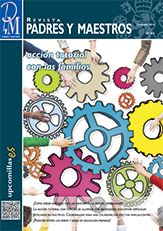Do primary school children suffer from stress?Detection and psychoeducational intervention
DOI:
https://doi.org/10.14422/pym.i360.y2014.007Keywords:
Daily stress, childhood, assessment, psychoeducational intervention, education, educational guidance, tea editionsAbstract
The term daily stress refers to the small setbacks and frustrations that children and adults experience as part of everyday life. Daily stress in childhood has been associated with problems such as anxiety, depression, low self-esteem and physical problems. It has also been linked to difficulties in peer relationships, irritability, aggressiveness and poor academic performance. These consequences of daily stress highlight the need to develop not only instruments for detecting it but also psychoeducational interventions for tackling it. This article describes the assessment of stress in boys and girls by means of the Children’s Daily Stress Inventory (in Spanish, the IECI), and also offers a series of educational guidelines regarding its prevention and treatment within both the school and family contexts.
Downloads
Downloads
Published
How to Cite
Issue
Section
License
El Servicio de Publicaciones de la Universidad Pontificia Comillas (la editorial) conserva los derechos patrimoniales (copyright) de las obras publicadas en Padres y Maestros.
Pasado el periodo de embargo está permitida la reutilización del contenido bajo una Licencia Creative Commons Atribución-NoComercial-SinDerivadas 3.0 Unported.










